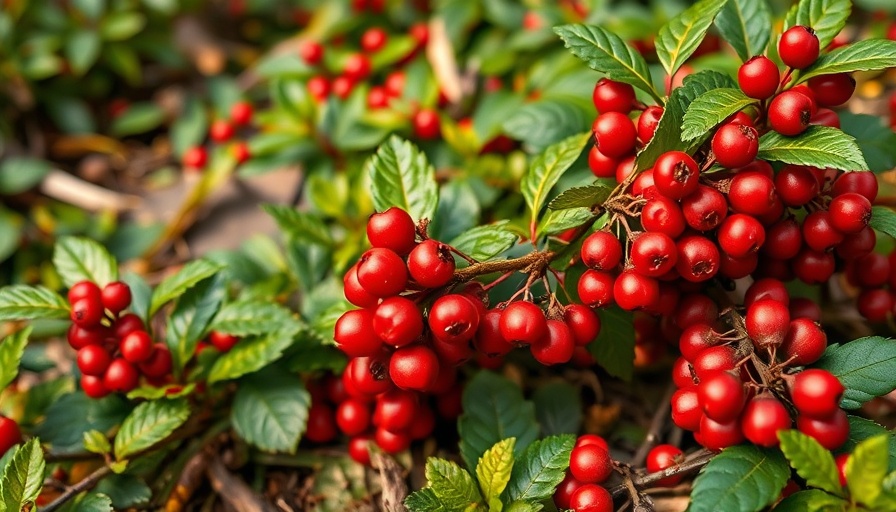
Support Wildlife This Winter with Thoughtful Plant Choices
As the vibrant colors of fall give way to the gray hues of winter, many homeowners begin to focus on preparing their gardens for the colder months. However, one important aspect often overlooked is how to support local wildlife during this time. By selecting the right landscape plants, you can create a nurturing environment that provides food, shelter, and habitat for various bird and animal species throughout the harsh winter months. Here are twelve plants that not only enhance your garden's beauty but also serve as a winter pantry for our wildlife friends.
1. American Holly: A Winter Feast for Birds
The American Holly (Ilex opaca) is a standout choice for winter landscapes. This evergreen tree produces visually striking clusters of bright red berries, which serve as a crucial food source for birds, including the Northern Cardinal and American Robin, throughout winter. Moreover, its foliage offers shelter from harsh winter elements, making it a multi-functional addition to your garden.
2. American Beautyberry: Aesthetic and Functional
Known for its vibrant purple-pink berries, the American Beautyberry (Callicarpa americana) is not only visually appealing but also serves as an important food source for various birds and small mammals. Thriving in USDA zones 5-8, this native shrub can help maintain biodiversity in your garden by attracting different species of wildlife during the colder months.
3. Arrowwood Viburnum: A Berry Bonanza
Arrowwood Viburnum (Viburnum dentatum) is another native shrub that supports wildlife. Hardy in USDA zones 3-8, its white blooms give way to bluish-black fruits that are a late-winter meal for a variety of birds and mammals. Beyond providing food, its dense foliage offers excellent cover from predators.
4. Winterberry Holly: A Holiday Favorite for Wildlife
Winterberry Holly (Ilex verticillata) is a deciduous shrub famous for its bright red berries that linger through winter, providing sustenance for birds like robins and mockingbirds. By planting this shrub, you can create a festive winter landscape while aiding local wildlife.
5. Spicebush: A Hidden Gem
Spicebush (Lindera benzoin) is a less commonly known shrub that serves as a valuable food source during the winter months. Its fruits are particularly appealing to thrushes and cardinals, making it an excellent addition to your wildlife garden.
6. American Elderberry: More Than Just Berries
The American Elderberry (Sambucus canadensis) is a highly versatile plant, providing beautiful fragrant flowers during the summer and nutritious berries in the fall. This plant attracts various pollinators and birds, enhancing the life cycle of your garden.
Creating a Sustainable Winter Habitat
While selecting the right native plants is essential, it’s also crucial to maintain a garden that fosters natural habitats. Leaving leaf litter, creating brush piles, and incorporating evergreen shrubs can provide essential insulation and shelter for overwintering insects and small mammals. This practice not only supports wildlife but also contributes to the health of your garden ecosystem.
The Importance of Native Plants in Winter
Choosing native plants for your landscape design plays a vital role in sustaining biodiversity and creating a resilient garden. Native plants are adapted to local soil and climate conditions, requiring less maintenance and minimal chemicals. By designing your landscape with these considerations, you can support local ecosystems even in winter.
In Conclusion: A Call to Action for Gardeners
As we prepare our gardens for winter, let’s remember our responsibility to local wildlife. By planting these twelve landscape plants, homeowners can easily create a thriving habitat that offers food and shelter for birds and small mammals during the colder months. Consider adopting these practices this winter, and watch as your garden transforms into a vibrant wildlife sanctuary.
 Add Row
Add Row  Add
Add 




Write A Comment